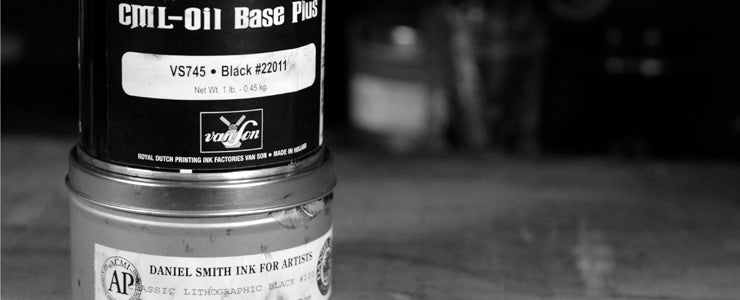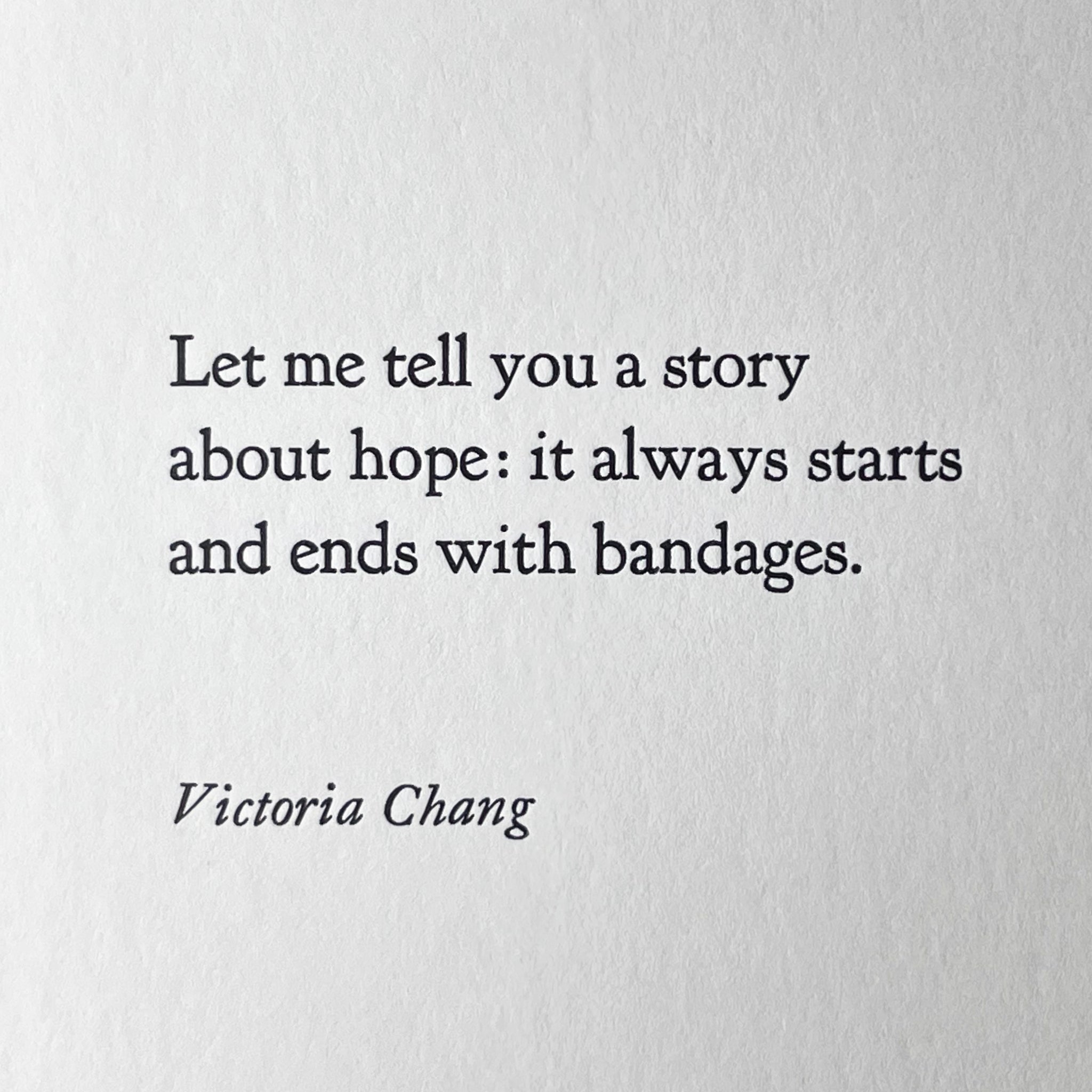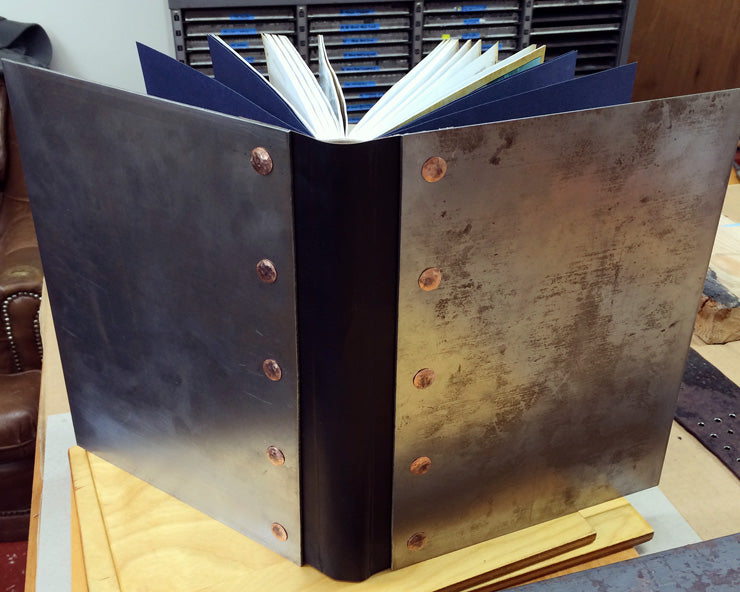Copper Riveting

Riveting may seem an odd topic to file under bookbinding, but nevertheless it came up in a recent commission. I used copper rivets to attach the covers of an edition of metal books.
I didn’t know anything about riveting when I took on the metal book project. It turned out to be the best attachment solution, so I rolled up my sleeves and figured it out. Hopefully you get to the hands-on practice faster than I did!
Tools & Materials
- ball peen hammer
- side cutters
- leather punch
- rivet setting tool
- chunk of steel
- copper rivets & burrs
- scrap leather
- scrap steel
The only tool not pictured here is a solid chunk of steel to hammer on. You don’t need an anvil, just something solid and heavy that can take a beating and won’t jump up off the table. The leather and steel are scraps from the exact same materials I used on the final metal books. Always best to practice with the actual materials when possible. Also, keep in mind that your rivets and holes need to be the same size!
Technique

Backside of rivets, posts fully flattened.
Punch a hole in the leather, with a scrap board underneath for a clean cut and to protect the table. For the holes in the steel, I had a machinist friend drill them with a drill press. Given the number of holes he drilled, clearly he thought I needed lots of practice too. Assemble thus: rivet, steel, leather, burr (small round disc that comes with the rivets). Use the rivet setting tool to set the burr with one or two firm hammer hits. Trim the post of the rivet if needed to about 1/4 inch (the length of your rivets depends on the thickness of the materials you are riveting. I used #9 rivets with 3/8 inch posts and didn’t have to trim them at all).

Hammered heads of rivets.
The bulk of the work is on the backside of the rivet, i.e. the side where you set the burr. It’s a long series of slow consistent firm taps, working at a slight angle to the head of the post and working your way around the post in a circular fashion, with the ball peen side of the hammer. Slowly, slowly the post begins to mushroom and then flatten. When you’ve had enough, flip it over and tap down the heads. These don’t need as much work but for aesthetic purposes I like to round them and the ball peen gives them that awesome hammered texture that really makes it look handmade. Because of course it is!
Note on Annealing

Pink! After annealing. No filter on this photo.
Annealing is heating up metal to make it easier to work with. It makes it immensely easier to hammer, Copper ‘work-hardens,’ which means literally the more you hit it the harder it gets. I experimented with annealing, using a small propane torch and steel tongs to heat each rivet to glowing red and then immediately dousing the rivet in cold water. Oxidation causes a wild pink coloring effect on the copper, which you can mostly remove by sanding or soaking in white vinegar and table salt for a few hours. In my experiments a pinkish tinge still lingered and I opted to skip the annealing process due to aesthetic guidelines. However if you don’t mind a little pink in there, annealing makes hammering a heck of a lot easier and I highly recommend it.
Last but not least, here’s a handy little youtube video from Tandy Leather (where you can also get most of these materials online, though I recommend searching out your local leather supply shop first!) that demonstrates the basic process. The main differences are that its adjoining two pieces of leather instead of steel, and they just round the post instead of completely flattening like I did for the application to bookbinding.
Your turn! Practice and practice.



